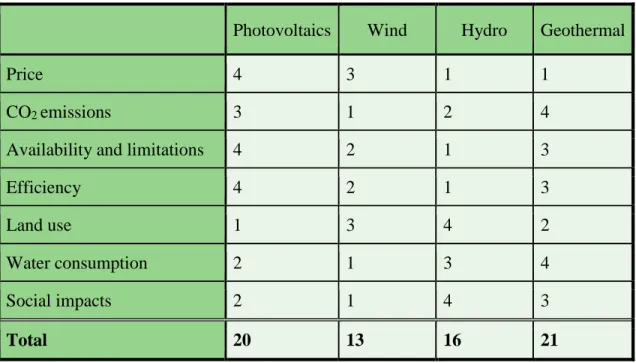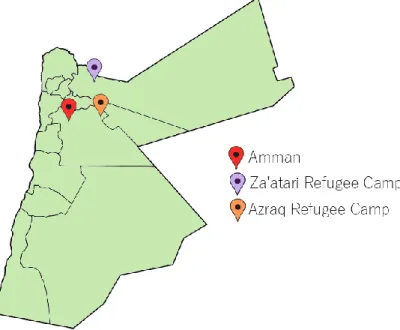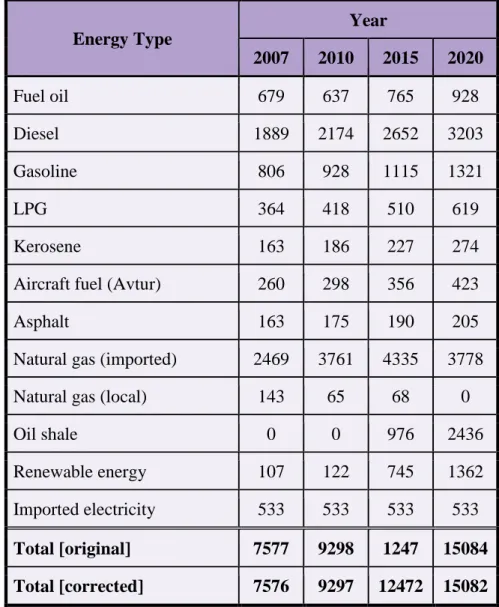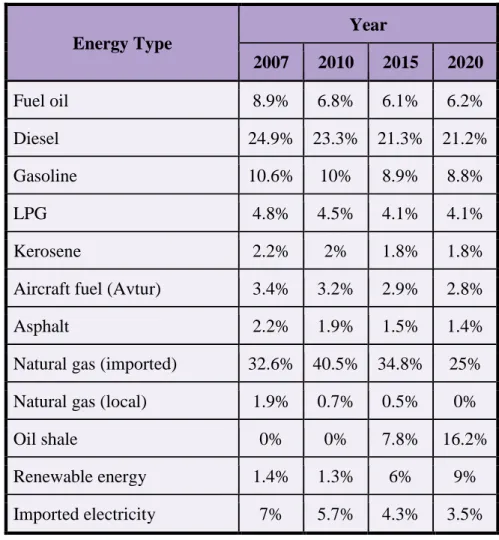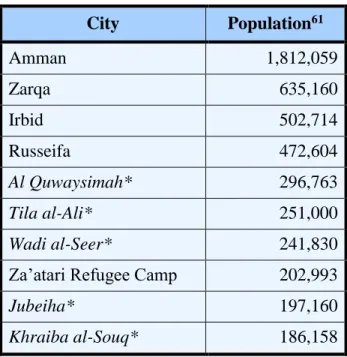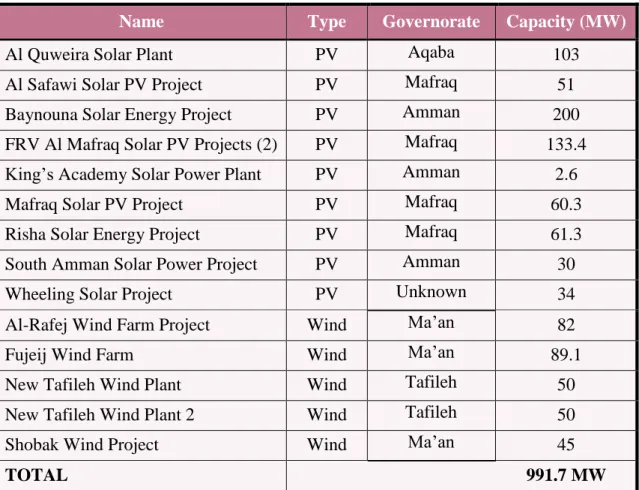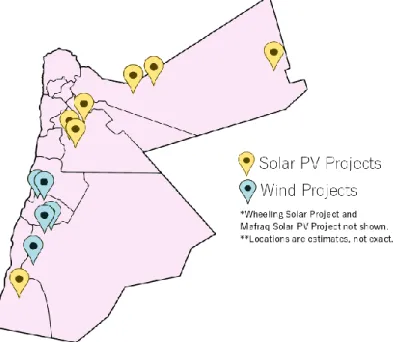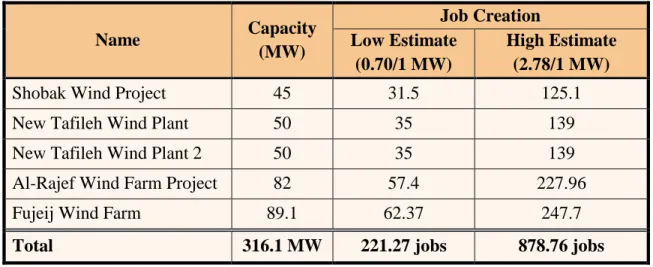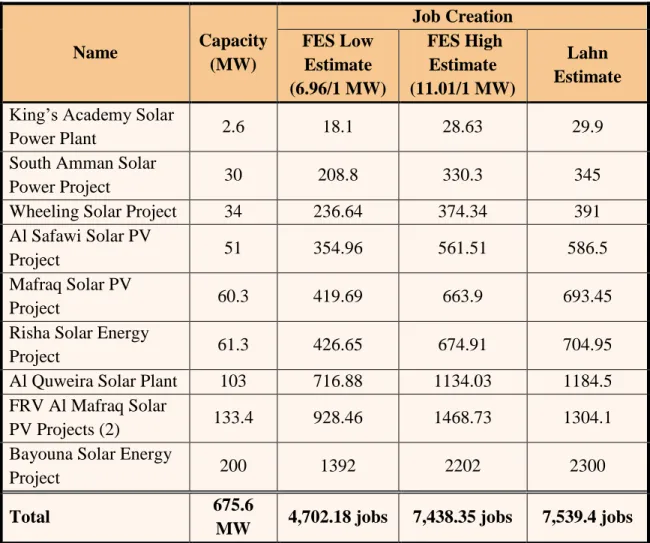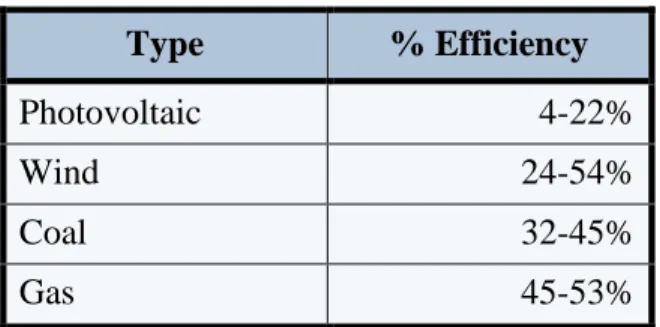RENEWABLES & REFUGEES: A SOLUTION FOR JORDAN
by
Lauren Ashley Burns
A thesis presented in partial fulfillment of the requirements for completion of the Bachelor of Arts degree in International Studies
Croft Institute for International Studies Sally McDonnell Barksdale Honors College
The University of Mississippi University, Mississippi
May 2019
Approved by:
______________________________________
Advisor: Dr. Vivian Ibrahim
______________________________________
2nd Reader: Dr. Joshua Howard
______________________________________
3rd Reader: Dr. Timothy Nordstrom
ii
© 2019 Lauren Ashley Burns ALL RIGHTS RESERVED
iii Abstract
As the Hashemite Kingdom of Jordan continues to host the third largest Syrian refugee population in the world, the state’s infrastructure and its people are taking a toll.
Before the war in Syria began, Jordan was already suffering from a weak economy, resource scarcity, and an enormous population boom. Since accepting nearly 2.5 million refugees, these issues have compounded year after year—nearly reaching a breaking point.
I propose an unconventional solution to some aspects of the refugee crisis:
renewable energy. Renewables are cheaper than fossil fuels, consume less water in electricity generation, emit fewer greenhouse gases, and promote job creation and diversification. Better yet, Jordan has enormous potential for renewable energy, especially in solar photovoltaics (PV) and wind.
In this study, I evaluate Jordan’s readiness to implement renewable energy, analyze a case study of the Za’atari refugee camp (which recently transitioned to running entirely on solar energy), and make basic projections on potential job creation and water conservation by switching from coal and natural gas to PV and wind. I find that Jordan has successfully paved the way for jumpstarting its renewable sector, Za’atari has benefitted from solar energy, and the outlook for job creation is good, and water conservation even better. There are also some smaller, indirect positive impacts that renewable energy can have on combating the Syrian refugee crisis in Jordan.
iv
Table of Contents
List of Abbreviations v
List of Tables & Figures vi
I. Introduction 1
II. Framework & Literature Review 7
The issues at hand in Jordan today 7
Environmentalism of renewable energy 9
Economics of renewable energy 10
III. Methodology 14
IV. Analysis: RE Progress 16
V. Case Study: Za’atari 23
VI. Analysis: Basic Projections 28
Job creation 28
Water conservation 33
VII. Results 36
Readiness and promotion of the RE sector by the GoJ 36
Za’atari’s solar plant 37
Job creation 38
Water conservation 40
Other impacts 42
VIII. Conclusions & Reflections 44
Bibliography 47
Appendix 55
v
List of Abbreviations
GoJ: Government of Jordan GW: Gigawatt
GWh: Gigawatt hour
HKJ: The Hashemite Kingdom of Jordan JC: Jordan Compact
JREEEF: Jordan Renewable Energy and Energy Efficiency Fund JRP: Jordan Response Plan
JRPSC: Jordan Response Platform for the Syria Crisis kW: Kilowatt
kWh: Kilowatt hour
MEMR: Ministry of Energy and Mineral Resources
MOPIC: Ministry of Planning and International Cooperation MW: Megawatt
MWh: Megawatt hour MWp: Megawatt peak
NEPCO: National Electric Power Company PV: Photovoltaic
RE: Renewable energy SRC: Syrian refugee crisis UN: United Nations
UNHCR: United Nations High Commission for Refugees UNRWA: United Nations Relief Works Agency
WASH: Water, sanitation, and hygiene
vi
List of Tables & Figures
Table 1: Sustainability Rankings of Four Renewables 10
Table 2: Jordan’s Energy Demand Forecast 19
Table 3: Jordan’s Energy Demand Forecast (% of total) 20 Table 4: Population of Jordan’s Largest Cities and Refugee Camps 24 Table 5: Planned PV and Wind Projects in Jordan, 2017 29 Table 6: Projected wind job creation in Jordan, FES model 31 Table 7: Projected PV job creation in Jordan, both models 32
Table 8: Efficiency of Electricity Generation 33
Table 9: Projected Annual Electricity Production for RE Projects 34 Table 10: Projected Annual Electricity Production for Four Resources 35 Table 11: Estimated Water Consumption for Four Resources at 991.7
MW 35
Table 12: Population and Electricity Consumption in Jordan, 2009-2018 55
Figure 1: Amman, Za’atari, and Azraq 12
Figure 2: Map of PV and Wind Projects in Jordan, 2017 30
1 I. Introduction
Before the outbreak of the war in neighboring Syria which would soon create one of the worst humanitarian crises in world history, Jordan was already suffering from a multitude of its own domestic issues. A combination of population growth, technological advances, and climate change has made Jordan, a once relatively water-rich state, the third most water-scarce country in the world.1 In addition to water scarcity, Jordan is very natural resource-poor and must rely on its neighbors to import over 90 percent of its energy.2 As in many other Arab countries, a majority of the population is under the age of 30. Some estimates show that the under-20 population in Jordan is as high as 60 percent.3 As youth begin to enter the workforce, the large population boom makes job competition extremely scarce—by 2011, the youth unemployment rate reached 14.5 percent.4
Throughout its history, the Hashemite Kingdom of Jordan has been the primary recipient of refugees in the region, hosting Palestinians since the 1940s and receiving several hundred thousand Iraqis during the insurgency in 2003. As a result, the demographics of the Kingdom have shifted substantially: Jordanian citizens are now a minority in their own country.
1 Keith Proctor, Tapped Out: Water Scarcity and Refugee Pressures in Jordan, MercyCorps, 2014, 12.
2 “His Majesty Speeches,” Ministry of Energy and Mineral Resources, http://www.memr.gov.jo/Pages/viewpage.aspx?pageID=206.
3 J.O. Jaber, Fawwaz Elkarmi, Emil Alasis, and Anagnostopoulos Kostas, “Employment of renewable energy in Jordan: Current status, SWOT and problem analysis,” Renewable and Sustainable Energy Reviews 49 (2015): 491.
4 Alexandra Francis, Jordan’s Refugee Crisis, Carnegie Endowment for International Peace, 2015, 12.
2
Inevitably, all of these issues have worsened since the massive influx of Syrian refugees began in 2011. As of December 2018, 671,148 Syrian refugees have registered with the UNHCR in Jordan.5 At the 2016 Supporting Syria & the Region conference in London, King Abdullah II claimed that one in every five people in Jordan is a Syrian refugee, 6 bringing the total to about 2 million—though his introduction to the Jordan Response Plan (an international aid agreement discussed in Sections II and IV) cites 2.5 million. Though the exact number of refugees within Jordan’s borders is unclear, it is evident that this population boom has had a tremendous impact on Jordan’s stability by worsening resource scarcity and further straining state infrastructure. The GDP growth rate is stunted, public debt is growing rapidly, and foreign direct investment has plummeted.7 Citizens are feeling the effects of these changes, with unemployment reaching a staggering 22 percent in 2014. These economic shortcomings have compounded into increased resentment towards Syrians, as 96 percent of surveyed Jordanians felt that the refugees were to blame for the nation’s lack of job opportunities.8
Resource scarcity has also worsened. Before the refugee crisis, Jordan’s natural aquifers were expected to last until 2060; now, they will likely not be functional by 2030.9 In the northern municipalities which host the largest numbers of Syrian refugees,
5 “Syrian Regional Refugee Response,” UNHCR, 2018, https://data2.unhcr.org/en/situations/syria/location/36.
6 TRT World, “King Abdullah of Jordan speaks at Syrian donor conference,” YouTube video, 6:57, 4
February 2016, https://youtu.be/jaxihy0LVYk.
7 H.K.J. Ministry of Planning and International Cooperation, The Jordan Response Plan for the Syria Crisis 2017-2019,
https://static1.squarespace.com/static/522c2552e4b0d3c39ccd1e00/t/5956897e78d1714f5b61f5c2/149 8843547605/JRP+2017-2019+-+Full+-+%28June+30%29.pdf, 7.
8 Francis, 12.
9 Anne Marie Baylouny, “Water Thieves or Political Catalysts? Syrian Refugees in Jordan and Lebanon,”
Middle East Policy 25, no. 1 (2018): 108-9.
3
the average per capita water supply is 30 liters a day—50 liters short of the minimum requirement to satisfy basic needs.10 In Mafraq, water shortages have worsened “fourfold due to pressures from the Syrian influx.”11 According to the Jordan Response Plan, household energy consumption rose 34 percent since the beginning of the conflict, but the per-capita usage actually declined 21 percent. This trend suggests that demand in general is much higher, but on an individual basis the people cannot afford their electricity needs as before. This is because most Syrian refugees live outside of camps and in host
communities, squeezing entire families into small garages or other one-room accommodations.12
As the Syrian crisis enters its eighth year with no end in sight, the implications of these issues must be considered for Jordan’s—and the region’s—continued stability and security. Continued reliance on immediate humanitarian aid from non-governmental organizations and the United Nations is neither sufficient nor sustainable. In 2017, the UNHCR only secured 57 percent of its $1.2 billion-dollar appeal for refugee response in Jordan, most of which went towards meeting immediate needs with food vouchers and drinking water and some long-term needs such as education.13 While these are important for basic survival of the refugee population, it does little to better their long-term
prospects. This is especially important because refugee crises are generally becoming
10 Glada Lahn, Owen Grafham, and Adel Elsayed Sparr, Refugees and Energy Resilience in Jordan, Chatham House, 2016, https://www.chathamhouse.org/publication/refugees-and-energy-resilience-jordan, 8.
11 Francis, 10.
12 H.K.J. Ministry of Planning and International Cooperation, The Jordan Response Plan for the Syria Crisis 2018-2020,
https://static1.squarespace.com/static/522c2552e4b0d3c39ccd1e00/t/5ab3565f8a922d5e4a011286/152 1702505515/JRP+Final+Copy+21-3.pdf, 20.
13 “Regional Refugee & Resilience Plan 2017 Annual Report,” UNHCR, 2017, https://data2.unhcr.org/en/documents/download/63530.
4
“protracted situations”: 61 percent of refugees have been displaced for five or more years,14 and the UNHCR estimates that the average refugee (any, not specific to Syria) spends 17 years inside a refugee camp.15 With natural resources continuing to dwindle and populations continuing to rise, Jordan must look to other means of structural development to combat these issues and provide for both its citizens and guests.
One of the best alternative methods is developing the renewable energy sector.
Renewable energy is typically considered a solution for energy cost savings and environmental degradation, not for a humanitarian crisis. However, there are several reasons to look towards renewable energy (RE) to combat this crisis, the first being that Jordan has great potential for renewables. The most common modes of renewable energy generation are solar (photovoltaic or PV), wind, hydroelectric, biomass, and geothermal.
This thesis will focus primarily on a solar and wind RE approach given Jordan’s extreme water scarcity, the pollution caused by burning biomass, and the limited geographic locations suitable for geothermal energy usage. Located in the earth’s sunbelt and on hilly terrain, Jordan has the third largest non-hydropower capacity and largest photovoltaic capacity in the Middle East.16
14 Rebecca Gunning, The Current State of Sustainable Energy Provision for Displaced Populations: An Analysis, Chatham House, 2014,
https://www.chathamhouse.org/sites/default/files/field/field_document/2014120EnergyDisplacedPopula tionsGunning.pdf, 4.
15 Brita Nielsen, “Designing for multiple stakeholder interests within the humanitarian market:
the case of off-grid energy devices,” International Journal of Learning and Change 7 no. 1-2 (2013): 50.
16 Ana V. Ibáñez Prieto, “Jordan 3rd in region in renewable energy capacity—FES,” Jordan Times, 23 January 2018, http://www.jordantimes.com/news/local/jordan-3rdregion-renewable-energy-capacity-
%E2%80%94-fes; Fayez Abdulla et al., “Status of Jordan Renewable Energy Sector: Problems, Needs, and Challenges,” in Proceedings of the Regional Collaboration Workshop on Energy Efficiency and Renewable Energy Technology, 2004.
5
Renewable energy is also a sustainable alternative to traditional fossil fuels, both economically and environmentally. In fact, one study from Adam Smith International shows that “neglecting the green economy may currently cost Jordan more than 2 per cent of GDP a year in environmental degradation.”17 Jordan relied on imported heavy fuel oil as its primary energy source until the Egypt-Jordan Arab Gas Pipeline was erected in 2003. At its height in 2009, natural gas imported from Egypt provided for 91 percent of Jordan’s electricity generation; however, due to a combination of high demand, low supply, and targeted attacks during the Arab Spring, the proportion fell to 19 percent in 2012 and now the pipeline is no longer in service.18 Without domestic resource alternatives to make up for this gap in provision, the cutoff led to immediate energy shortages in the following years until Jordan secured more oil imports from Kuwait and Saudi Arabia.19 By developing its own renewable energy sector, Jordan can significantly decrease its dependence on others for energy and prevent another mass outage such as this. Developing the RE sector can also diversify the economy and promote job growth, which Jordan desperately needs. The planning, construction, management, and evaluation of solar and wind farms requires a vast array of employees, from engineers to accountants to laborers.
Environmentally speaking, it is well known that burning fossil fuels is not a sustainable option for energy and electricity production. With an exponentially growing demand due to population growth and technological advancements, current non-
17 Study of mechanisms to incentivize the financial sector to scale up financing of green investment in Jordan. Adam Smith International, 2013, 3.
18 Jaber et al., 495.
19 Ibid., 492.
6
renewables are predicted to run out within the century. Burning fossil fuels is also extremely detrimental to the environment, polluting the atmosphere and precious water resources. Renewables, as their name implies, are not finite resources and produce fewer CO2 emissions than traditional fuels.
The Hashemite Kingdom has begun advocating for renewable energy growth within the country over the past decade. King Abdullah tends to emphasize the environmentally-friendly and sustainability aspects of renewables in his speeches at climate change summits, but in reality, the interest in RE spans much further to political and economic advantages.
In this thesis, I argue that renewable energy—primarily solar and wind—can offset some of the negative effects on Jordanians and Syrians coming from the Syrian refugee crisis (SRC). It could provide more stability and independence in energy provision, create jobs, and conserve water consumption. There is also evidence that RE can indirectly better the livelihoods of both Jordanians and Syrians through improved environments for education and healthcare. If successful, Jordan’s renewable energy response to the crisis can revolutionize and set the new standard for worldwide humanitarian refugee response.
7 II. Framework & Literature Review
The issues at hand in Jordan today
This thesis looks at the potential for renewable energy to mitigate some of the problems caused or exacerbated by the Syrian refugee crisis in Jordan. The effects of this crisis are vast, but I focus primarily on employment and natural resource consumption, because these were already large concerns for Jordan prior to the crisis and have worsened since.
The first chapter of the Jordan Response Plan for the Syria Crisis (JRP), published by the Jordanian Ministry of Planning and International Cooperation (MOPIC) in 2015 and later updated in 2017, highlights many of these issues. Jordan’s pre-conflict GDP was growing at a rate of 15.2 percent annually, but now rests at just 6 percent. Public debt has grown exponentially to constitute nearly 93 percent of GDP, and foreign direct
investment has decreased 42.6 percent.20 The JRP also mentions increased job
competition, strained health and education sectors, poor waste and water management, and large increases in energy demand.
It is important, however, to take publications from Jordanian ministries with a grain of salt—the government “consistently overstates the negative impacts of the Syrian refugee influx,”21 likely in attempt to secure more international funding. For example, as
20 The Jordan Response Plan for the Syria Crisis 2017-2019, 7.
21 Francis, 1.
8
mentioned earlier, the 2018-2020 JRP states that “the total residential electricity consumption increased by 34% between 2011 and 2016 […] while per capita
consumption of electricity went down by 21% [...] demonstrating that people cannot afford the previous level of consumption.”22 However, using data from the Jordanian Ministry of Energy and Mineral Resources’ 2017 Annual Report and the Department of Statistics’ Jordan in Numbers 2017 yields different results. The total residential electricity consumption did increase 34 percent from 2011 to 2016, but per capita usage did not decrease 21 percent; in fact, it increased 4.44 percent.23 It is unclear what data was used in the JRP to find a 21 percent decrease, as the document did not cite any sources.
Detailed comparisons between the JRP’s claims and actual numbers calculated using MEMR’s data can be found in the Appendix, Table 11.
Nevertheless, these government publications do describe the increased tensions and strained infrastructure in Jordan, even if exact numbers are sometimes exaggerated.
These general findings are backed up by academic publications on the SRC from Chatham House, the UNHCR, the Carnegie Endowment for International Peace, Adam Smith International, Human Rights Watch, and others.
In order to examine how Jordan can begin to solve some of these problems through renewable energy (RE), I divide my focus into two parts: (1) the environmental benefits of RE and (2) the economic benefits of RE.
22 H.K.J. Ministry of Planning and International Cooperation, The Jordan Response Plan for the Syria Crisis 2018-2020,
https://static1.squarespace.com/static/522c2552e4b0d3c39ccd1e00/t/5ab3565f8a922d5e4a011286/152 1702505515/JRP+Final+Copy+21-3.pdf, 20.
23 See Appendix, Table 11.
9 Environmentalism of renewable energy
While looking at RE as a sustainable solution to combating the aforementioned issues, it is important to consider their environmental footprint. In general, clean renewable energy produces fewer CO2 emissions and consumes less water than
traditional fossil fuel resources. This is especially important in Jordan, which suffers from extreme water scarcity and pollution. Evans, Evans, and Strezov tested several
sustainability indicators for four common renewables and two fossil fuels, such as energy efficiency, water consumption, land use, and greenhouse gas emissions. They found that on average coal and gas produced the most CO2, followed by geothermal, PV,
hydropower, and wind.24 However, emissions from hydropower vary greatly depending on the location of energy generation and can be as high as geothermal emissions. As for PV and wind, most of the pollutants are emitted during the manufacturing of panels and mills, and very little while actually generating energy.25 The rate of CO2 emissions for these two also vary greatly depending on the type of materials used.
Wind and PV by far use the least amount of water. As with CO2 emissions, most of the water in PV and wind energies is used in the manufacturing of materials, not energy production.26 When it comes to energy efficiency, no other resource can compare to hydropower’s 90+ percent efficiency rate. Unfortunately, hydropower is not a feasible energy alternative in Jordan on a large scale. Wind comes in second, with a similar efficiency rating to coal and gas. PV efficiency levels are the lowest, but depend greatly
24 Annette Evans, Vladimir Strezov, and Tim J. Evans, “Assessment of sustainability indicators for renewable energy technologies,” Renewable and Sustainable Energy Reviews 13 (2009): 1083.
25 Ibid., 1084.
26 Ibid., 1085.
10
on the type of cells installed—with higher quality products comes more efficient results.27
Considering these three factors, wind and PV energy will be the best options for Jordan, environmentally. They are water-conscious, which is of utmost importance. They also produce very few greenhouse gases while still maintaining ample energy efficiency.
The table below summarizes the findings from Evans’ study, ranking the sustainability of different energy sources from one to four, with the lowest score (1) being the most sustainable and the highest score (4) the least sustainable.
Table 1: Sustainability Rankings of Four Renewables28
Photovoltaics Wind Hydro Geothermal
Price 4 3 1 1
CO2 emissions 3 1 2 4
Availability and limitations 4 2 1 3
Efficiency 4 2 1 3
Land use 1 3 4 2
Water consumption 2 1 3 4
Social impacts 2 1 4 3
Total 20 13 16 21
Economics of renewable energy
Perhaps the most immediate—and most important—effect of RE is job production. There is much discussion on exactly how many jobs the renewable sector
27 Ibid.
28 Ibid., 1086.
11
generates and how the job creation rate should best be measured. Studies show that renewable energy can produce anywhere between 1.7 to 14.7 times more jobs than traditional energy industries.29 This large range is in part due to the varying number of jobs that different RE technologies produce (i.e. PV tends to create more jobs than biomass).30 More importantly, however, studies tend to use two different markers for job growth, further widening the range.
Dalton and Lewis and Llera et al. discuss this in great detail. The two common measurements for RE job creation is jobs/megawatt (MW) installed in one year and jobs/cumulative MW installed.31 Llera et al. and Dalton discuss these two modes and both agree that the latter is the most accurate way to depict growth. The former
measurement can yield a deceptively high ratio due to the large front-load job creation in manufacturing and installation, and is also “often dictated by economic climate and government policy.”32 The latter is more indicative of the realistic long-term job
sustainability. One factor that is not accounted for in either ratio, however, is if the jobs are domestically or internationally-sourced. Countries that are able to manufacture all components themselves will have a higher true job creation rate than those that must import the needed materials. Another thing to consider is that not all jobs related to the RE sector directly correlate with the number of megawatts installed. For example, the number of researchers, designers, and accountants hired to develop a solar or wind farm
29 E. Llera et al., “Forecasting job creation and renewable energy deployment through a value-chain approach,” Renewable and Sustainable Energy Reviews 21 (2013): 263.
30 Rosebud Jasmine Lambert and Patricia Pereira Silva, “The challenges of determining the employment effects of renewable energy,” Renewable and Sustainable Energy Reviews 16 (2012): 4670, Table 2.
31 G. J. Dalton and T. Lewis, “Metrics for measuring job creation by renewable energy technologies, using Ireland as a case study,” Renewable and Sustainable Energy Reviews 15, no. 4 (2011): 2124.
32 Ibid., 2131.
12
are not necessarily dependent on the number of MW installed.33 Despite this, using jobs/total MW installed is the most accurate and stable indicator currently available.
Using this indicator, solar is the largest producer of jobs in the renewable industry.34 In refugee camps, data on RE job creation is limited. There are few refugee camps that have implemented large-scale renewable energy projects—in fact, Jordan was the first to do so in its Azraq and Za’atari Syrian refugee camps in 2017. Despite a lack of statistical data, preliminary findings have shown that the new RE projects have promoted some small boosts in the local camp economy.35 These projects provide refugees with valuable skills that they can utilize when they assimilate into the host communities (granted they obtain a work permit) or return back home.
Figure 1: Amman, Za'atari, and Azraq
33 Llera et al., 264.
34 A Guide to Renewable Energy in Egypt and Jordan, Friedrich Ebert Stiftung, 2016, https://library.fes.de/pdf-files/bueros/amman/12534.pdf, 157.
35 Lahn et. al, 23-24.
13
Developing the RE sector can have other positive direct and indirect effects on the local economy. The UNHCR expects to save upwards of $5,000,000 a year in electricity costs in Za’atari alone thanks to the solar plant,36 and can delegate these savings to other sectors to better the livelihoods of the residents living in the camp. Because of the increased energy sources at a lower cost, the provision of electricity in the camps has increased from eight to 12 hours a day,37 allowing people to work longer hours. In the same vein, providing electricity to power streetlights can have an indirect effect on education—a number of children do not attend school because they feel unsafe walking long distances throughout the camp in the dark.38
Taking into account both the environmental and economic factors of renewable energy production, PV and wind are the best options for Jordan. They consume the least amount of water, produce few greenhouse gases, are efficient at a sustainable level, promote job growth, diversify the economy, and indirectly affect people’s livelihoods in a positive way.
36 “Jordan-Zaatari Refugee Camp December 2018,” UNHCR, https://data2.unhcr.org/en/documents/download/67368, 4.
37 Ibid.
38 Gunning, 2-4.
14 III. Methodology
To fully answer the proposed question, I conducted three separate analyses. The first questioned the feasibility of a renewable energy sector in Jordan—though there is great physical opportunity for PV and wind, what is the political outlook on this development? I listened to several of King Abdullah II’s speeches at numerous climate change and Syrian crisis response summits to assess the image that Jordan attempts to portray concerning RE. I then inspected the steps the Government of Jordan (GoJ) has taken to promote this change. Important to this analysis were the examination of annual reports and strategic plans from the Ministry of Energy and Mineral Resources (MEMR).
I analyzed not only the content of the documents (i.e. the extent of RE’s presence in its future plans and goals), but also their context: is RE the main topic of future
developments, or a side project? Are the documents widely available in English and Arabic? Then, I examined how Jordan has reached out on an international scale to achieve the goals it has articulated. Most important of these are the Jordan Compact and the Jordan Response Plan, two corresponding agreements with the European Union that aim to transform the setbacks of the SRC in Jordan into a development opportunity for the state. Both documents stress the need for renewables. Based on these three elements, I determined that the foundational political will for RE in Jordan is significantly
developed.
Secondly, I conducted a case study of the Za’atari refugee camp in the northern Mafraq Governorate of Jordan. This was the first Syrian refugee camp established in the
15
Kingdom, located just 12 km from the southern border of Syria (See Figure 1). Over the years, it has become the largest Syrian refugee camp in the world and as such has been forced to better develop its infrastructure. In November 2017, a solar PV plant opened on the border of the camp that now powers the entire operation. Using UNHCR reports from their open-source online database, I outlined the effects on Za’atari and its residents since the construction and implementation of the on-site renewable energy plant. As stated in the introduction, I am most concerned with impacts on job creation, energy provision, water management, and resident livelihood. Though results are limited due to the recent nature of the plant’s launch, I found some links to indirect impacts on Syrian’s daily lives, such as increased school enrollment and improved health and WASH (water, sanitation, and hygiene) facilities.
Finally, to put Jordan’s renewable sector to the test, I have made some basic projections based on current wind and PV projects in the country. Flanders Investment and Trade published a study in October 2017 that outlined all energy projects under construction in the Kingdom at the time. Using several different models, I estimated the potential job creation and water conservation should Jordan complete all 14 PV and wind projects listed by Flanders. Because unemployment and water sustainability are two big issues exacerbated by the SRC in Jordan, RE’s potential to alleviate some of these struggles is imperative to Jordan’s stability.
16 IV. Analysis: RE Progress
In the past decade, even before the onset of the Syrian crisis, the Jordanian government began advocating for the development of renewable energy in the country through compelling speeches at international conferences, implementing laws, and setting statewide goals and initiatives. At the 21st meeting of the UN Climate Change Conference (COP21) in 2015, King Abdullah II emphasized the global responsibility for green
alternatives, the Syrian crisis, and Jordan’s steps towards the future:
The subject of this conference is also the fight of our generation […] We must act collectively, with foresight, responsibility and determination […] Jordan is
already the second water-poorest country on earth. We import more than 90 percent of our energy […] Meantime, we remain a safe haven for refugees fleeing regional violence. Now […] Jordan has one of the top two refugee populations per capita in the world […] These harsh realities are why Jordan has been integrating energy and environmental approaches into a sustainable, long-term national development strategy. In 2013, we were the first in our region to produce a
comprehensive, forward-looking National Climate Change Policy. In the past year alone, we have made greater strides towards energy independence and enhancing energy efficiency than in the entire life of our country.39
This statement is significant, as it begins to emphasize the link between the refugee crisis and renewables as a potential solution. At the Jordan-U.S. Business Forum, a conference dedicated to facilitating business opportunities between the two states,40 the King also said that “problems of cost and reliability mean we must diversify energy resources […]
39 “His Majesty Speeches,” Ministry of Energy and Mineral Resources.
40 “Jordan-US Business Forum,” Embassy of Jordan, http://jordanembassyus.org/gallery/jordan-us- business-forum.
17
the first Jordan-U.S. Business Forum produced new projects in renewable energy, but there are still tremendous opportunities to be explored.”41
Jordan further projected this progressive image with the passage of Law 13 of 2012 for Renewable Energy and Energy Efficiency (Law 13). This law incentivizes investment in renewable energy in several ways. Regarding the development of a RE project, Article 5a authorizes the MEMR to issue tenders to “attract competitive proposals,”42 which allows the Ministry to get a good deal on investments. It also lets both foreign and domestic companies investing in renewable energy projects bypass the typically complex bidding process and instead negotiate directly with the Minister of Energy, allowing for quicker and more streamlined deals.43 Article 11a removes custom duties and sales tax from all equipment and systems purchased for renewable energy projects, further decreasing the previously hefty price of investing in RE. Finally, articles 12-16 establish the Jordan Renewable Energy and Energy Efficiency Fund (JREEEF).
Domestic and international organizations with blueprints for renewable energy projects can apply for funding from the JREEEF, which is financed by the state’s general budget, returns on investments, and donations. The JREEEF would provide assistance at every level of development. Law 13 establishes the fund’s hierarchical administration, granting it significant power and independence. The JREEEF only recently became active. In May 2015, the fund had yet to be formed,44 but the MEMR’s Annual Report 2017 mentions
41 RHC JO, “King Abdullah II Remakrs [sic] at the Second Jordan-US Business Forum,” YouTube video, 10:23, 9 March 2013, https://youtu.be/WcY5KArexmA.
42 “Renewable Energy & Energy Efficiency (Law No. 13),” International Energy Agency, 23 July 2013, https://www.iea.org/policiesandmeasures/pams/jordan/name-36862-en.php.
43 Ibid.
44 J.O. Jaber et. al, 498.
18
that the “[JREEEF’s] investment achieved JOD 50 million and created more than 200 permanent jobs.”45
Another document published by MEMR, the Updated Master Strategy of Energy Sector in Jordan 2007-2020 (Master Strategy), also displays the government’s
commitment to renewable energy. The Ministry originally composed the Master Strategy in 2004 and then updated it in 2007. This document presents the total energy mix goals for 2020, including an increase in renewable energy and oil shale. It also provides the estimated costs of constructing and running new energy projects, obstacles to success in implementing these projects, and recommendations for moving forward.
A thorough analysis exposed major errors in the document, however, revealing the inefficient and inconsistent inner workings of the Jordanian ministries and their attitudes toward meeting commitments compared to the public image of change they have promoted. The Master Strategy is somewhat difficult to follow as it has been translated from Arabic to English. Due to the translation there are some discrepancies in the exact numbers, but in general the Master Strategy calls for the share of RE in the total energy mix to increase from 2007 to 2020.46 The table below lists the amounts (in tonnes of oil equivalent, TOE) of five different types of energy needed to achieve the “medium scenario” in 2020, though the meaning or explanation of this scenario is never given.
45 H.K.J. Ministry of Energy and Mineral Resources, Annual Report 2017,
http://www.memr.gov.jo/echobusv3.0/SystemAssets/469adf39-0f2f-4d01-a72b-d394c3b56332.pdf, 53.
46 H.K.J. Ministry of Energy and Mineral Resources, Updated Master Strategy of Energy Sector in Jordan for the period (2007-2020),
http://www.memr.gov.jo/EchoBusV3.0/SystemAssets/PDFs/EN/energystrategy.pdf, 6-7.
19
Table 2: Jordan’s Energy Demand Forecast (quantities in thousand TOE) 47
Energy Type
Year
2007 2010 2015 2020
Fuel oil 679 637 765 928
Diesel 1889 2174 2652 3203
Gasoline 806 928 1115 1321
LPG 364 418 510 619
Kerosene 163 186 227 274
Aircraft fuel (Avtur) 260 298 356 423
Asphalt 163 175 190 205
Natural gas (imported) 2469 3761 4335 3778
Natural gas (local) 143 65 68 0
Oil shale 0 0 976 2436
Renewable energy 107 122 745 1362
Imported electricity 533 533 533 533
Total [original] 7577 9298 1247 15084 Total [corrected] 7576 9297 12472 15082
The figures following this table in the Master Strategy portray the proportions of the energy mix in pie charts, though the numbers are incorrect. For example, the chart in the Master Strategy labels renewable energy as 6 percent of the total energy mix in 2020 in this scenario, though according to the data provided in Table 3 below it would be 9 percent.
47 Ibid., 6.
20
Table 3: Jordan’s Energy Demand Forecast (% of total)
Energy Type
Year
2007 2010 2015 2020
Fuel oil 8.9% 6.8% 6.1% 6.2%
Diesel 24.9% 23.3% 21.3% 21.2%
Gasoline 10.6% 10% 8.9% 8.8%
LPG 4.8% 4.5% 4.1% 4.1%
Kerosene 2.2% 2% 1.8% 1.8%
Aircraft fuel (Avtur) 3.4% 3.2% 2.9% 2.8%
Asphalt 2.2% 1.9% 1.5% 1.4%
Natural gas (imported) 32.6% 40.5% 34.8% 25%
Natural gas (local) 1.9% 0.7% 0.5% 0%
Oil shale 0% 0% 7.8% 16.2%
Renewable energy 1.4% 1.3% 6% 9%
Imported electricity 7% 5.7% 4.3% 3.5%
Later, the Master Strategy provides another table listing eight different scenarios for energy production in 2020. None of the eight scenarios match the data given for the so-called “medium scenario,” and all eight list renewable energy as 10 percent of the mix.
Additionally, none of the scenarios in this table add to be 100 percent. These are serious discrepancies that diminish the legitimacy of the Master Strategy. It is unclear whether these miscalculations are due to mathematical or translation errors, as the original document in Arabic is not available on the Arabic MEMR website. However, one can
21
presume that these errors derived from neglect rather than translation, as both languages use the same set of Arabic numerals.
Despite these flaws in numerical data, the Master Strategy does provide important information regarding the future of RE in Jordan. It reiterates the state’s push towards energy alternatives by increasing percentages of renewable energy in the total energy mix every year, although new domestic oil shale projects receive the largest share of
increases. It states that high investment costs and a lack of special legislation are significant barriers to the renewable sector,48 and suggests that the government issue a law that will “stimulate the private sector to increase its investments in this domain” and create a fund to finance new RE projects.49 The government passed Law 13 a few years later in response to these issues.
In 2015, the MOPIC published its first version of the complex Jordan Response Plan (JRP), a “bold and innovative initiative to bring together humanitarian and
development programming under a common, nationally-led and resilience-based
framework […] which successfully laid the groundwork for a series of achievements that allowed the Kingdom to withstand the devastating impact of the [refugee] crisis.”50 In this document, the ideas of renewable energy solutions and the refugee crisis begin to converge. A year before the JRP was first published, the Jordan Response Platform for the Syria Crisis (JRPSC) was established, a group of representatives from the Jordanian government, donors, international NGOs, and the UN, tasked with implementing and
48 Ibid, 4.
49 Ibid, 21.
50 The Jordan Response Plan for the Syria Crisis 2017-2019, v.
22
monitoring the response plans.51 Under the authority of the JRPSC are 12 task forces, each charged with research and policy-making responsibilities for Jordan’s most critical sectors throughout the Syrian crisis: education, energy, environment, food security, health, justice, livelihood, municipal services, shelter, social protection, transport, and WASH.52 The initial JRP struggled to obtain even a third of its annual desired funding, but was helped with the signing of the Jordan Compact (JC) in 2016. This JC was signed between the European Union and Jordan, promising the Kingdom billions of dollars in grants and loans as well as lax trade regulations on the condition that Jordan allow Syrian refugees to obtain work permits.53 The three pillars of the Jordan Compact’s goal are to (1) turn the Syrian refugee crisis into a development opportunity, (2) rebuild host communities by financing the JRP, and (3) mobilize grants to support Jordan’s
macroeconomic framework.54 Consequently, the updated Jordan Response Plan for 2016- 2018 secured 54 percent of its funding, a substantial increase.55
Aside from some setbacks, the Jordanian government has proved overall that it is serious about revolutionizing its energy sector by passing laws, signing international agreements, and advocating for RE at large-scale public forums. In the following two sections, I highlight the changes that have occurred in Syrian refugee camps and host communities due to these pushes for renewable energy in the Kingdom.
51 Ibid., 10.
52 Ibid.
53 “The Jordan Compact: A New Holistic Approach between the Hashemite Kingdom of Jordan and the International Community to deal with the Syrian Refugee Crisis,” Ministry of Planning and International Cooperation, http://www.mop.gov.jo/DetailsPage/NewsDetailsEN.aspx?NewsID=718.
54 Ibid.
55 The Jordan Response Plan for the Syria Crisis 2017-2019, v.
23 V. Case Study: Za’atari
Za’atari, the first Syrian refugee camp in Jordan, opened July 2012 in the northeastern municipality of Mafraq. Za’atari is not only the largest refugee camp in Jordan, but is now also the largest Syrian refugee camp in the world.56 At its peak in April 2013, Za’atari housed an astonishing 202,993 refugees57 in an area slightly larger than 2 square miles; however, since mid-2014 the population has decreased and leveled out to around 80,000, with many refugee families opting to move into Jordanian cities or even return home to Syria.58 The camp’s first few years were characterized by dilapidated conditions: little to no infrastructure to manage water, waste, or electricity in combination with a militant, hostile in-camp host governance and post-traumatic stress led to several protests and attacks against international humanitarian aid workers and UNHCR staff.59 As the UNHCR struggled to keep up with the thousands of daily new arrivals, Gulf states—primarily Saudi Arabia—increased assistance to purchase semi-permanent caravans to replace the canvas tents that occupied the west side of the camp. With the provision of newer and sturdier living facilities, residents began to wire electricity to their homes, set up small shops and restaurants, and create their own internal economy
56 “Syrian Regional Refugee Response,” UNHCR, https://data2.unhcr.org/en/situations/syria/location/36.
57 Ibid.
58 “Zaatari Refugee Camp Factsheet February 2015,” UNHCR, 2015, https://data2.unhcr.org/en/documents/download/45767, 1.
59 Sakhr Al-Makhadhi, “A city emerges,” The National, 12 December 2013, https://www.thenational.ae/arts-culture/a-city-emerges-1.252218#full.
24
financed by vouchers and donated relief items.60 At its height in 2013, the Za’atari refugee camp had become Jordan’s fifth largest city.
Table 4: Population of Jordan's Largest Cities and Refugee Camps City Population61
Amman 1,812,059
Zarqa 635,160
Irbid 502,714
Russeifa 472,604
Al Quwaysimah* 296,763
Tila al-Ali* 251,000
Wadi al-Seer* 241,830
Za’atari Refugee Camp 202,993
Jubeiha* 197,160
Khraiba al-Souq* 186,158
*These were listed as cities in the dataset but are typically regarded as part of the capital city Amman, making the Za’atari refugee camp the fifth, not eighth, largest city.
Now, the camp has progressed and adapted to become a permanent fixture. A 2017 UNHCR survey revealed that 73 percent of Syrian refugees have “no intention to return [to Syria] in the next 12 months.”62 Amidst all the immediate humanitarian needs that the UNHCR must address on a daily basis—providing water, food, and health services—they were also growing increasingly concerned about the makeshift
infrastructure of the camp. One of the most pressing issues was electricity: the UN was spending upwards of $1M USD a month to provide electricity to caravans and tents in
60 Alison Ledwith, Zaatari: The Instant City, Boston: Affordable Housing Institute, 2014, 10-26.
61 “Jordan: Governorates, Major Cities & Urban Localities,” http://www.citypopulation.de/Jordan- Cities.html.
62 “Syrian refugees in Jordan, A protection overview,” Jordan INGO Forum, 2018,
http://testsite.jordaningoforum.org/wp-content/uploads/JIF-ProtectionBrief-2017-Final.pdf, 16.
25
Za’atari. In order to alleviate spending, they limited electricity to run only eight hours a day between the hours of 6pm and 2am,63 reducing costs to $500,000 USD a month during the summer and $700,000 USD a month during the winter.64 The upkeep and monitoring of electricity usage was nearly impossible to manage. By 2013, 73 percent of households had illegally wired a private connection to their homes from the public streetlight grid. Tangled messes of makeshift wiring hookups made maintenance extremely difficult and created a major fire hazard, which proved to be critical in the winter months that brought flooding and electricity outages. Accurate data on per-capita energy usage is limited because each electricity meter was split between seven buildings each.65
In response to the growing energy crisis, the construction of a solar PV power plant on the border of the camp began in April 2017. The $17.5M project funded by the German government66 is actually the second refugee camp in the world to be run on renewable energy—the Azraq refugee camp located about 30 miles southeast was the first. With a peak capacity of 12.9 MW an hour under ideal conditions, the 40,000 solar panels can now provide 12 to 14 hours of electricity every day to every single residential building in Za’atari.67 With this provision, each household in Za’atari can use
63 Taylor Luck, “World’s biggest solar power plant for a refugee camp opens in Zaatari,” The National, 13 November 2017, https://www.thenational.ae/world/mena/worlds-biggest-solar-power-plant-for-a- refugee-camp-opens-in-zaatari-1.675484.
64 Ledwith, 32.
65 Ibid., 30.
66 Marwa Hashem, “Jordan’s Za’atari camp goes green with new solar plant,” UNHCR, 14 November 2017, https://www.unhcr.org/news/latest/2017/11/5a0ab9854/jordans-zaatari-camp green-new-solar-
plant.html.
67 “Electrification Factsheet Zaatari Camp - Jordan,” UNHCR, 2018, https://data2.unhcr.org/en/documents/download/64899.
26
approximately 936 kWh annually; in comparison, the average individual living in Jordan outside of the camps will consume 1,244 kWh a year.68
For the UNHCR, this means significant savings for a desperately underfunded budget. The organization expects to save $5M each year in energy costs, resulting in an 80 percent savings.69 The plant’s production has also provided new job opportunities for both Jordanians and in-camp refugees. 38 percent of the plant was constructed by camp residents,70 and the Jordanian National Electric Power Company (NEPCO) and the Japan International Cooperation Agency (JICA) expect to train another 200 refugees to wire new connections, make repairs, and maintain aspects of the solar plant.71 These are valued skills that trainees can continue to use inside and outside of the camp.
Additionally, the plant will also improve Za’atari’s carbon footprint by reducing CO2
emissions by 15,600 tons a year.
Though the solar plant only recently opened, the residents can already expect to see the impact of some of its benefits to the community. With more electricity per day, residents can keep shops and restaurants open longer, increasing their revenues. The ability to keep the lights on for extended amounts of time is particularly important for the 20 percent of women who are head of the household72 and for those who depend on creating handmade goods at home as a main source of income. In general, the ability to power the 2,600 streetlights in the camp at all hours of the night will help to increase
68 See Appendix, Table 11.
69 “Electrification Factsheet Zaatari Camp – Jordan,” UNHCR.
70 Ibid.
71 “UNHCR and JICA launch Electricity Training programme for Syrian Refugees in Zaatari Refugee Camp,”
Japan International Cooperation Agency, 2 August 2016,
https://www.jica.go.jp/english/news/press/2016/160802_01.html.
72 “Jordan - Zaatari Refugee Camp December 2018,” UNHCR.
27
safety and mitigate crime. A week after the project was completed, the UNHCR
conducted a news report in which they interviewed several residents about the solar plant.
One mother said it would “keep her children healthy and safe,” citing that because she had to wash clothes at night, they would not dry properly overnight and often made her family sick.73 One child said that with more electricity he will be able to complete his homework and study for school.74 Another interviewee who worked on the construction of the solar plant said the technical skills he gained in doing so led to him landing a job in the renewable sector outside of the camp.75 In 2012, Practical Action outlined several livelihood standards that are directly linked to energy and electricity consumption, such as light hours per day, cooking and water heating, space heating and cooling, and information and communication technologies.76 Electricity can also be directly tied to health, as WASH facilities need water heaters for showering and clinics require adequate technologies to keep vaccines and medications cool.77 With an increase in electricity provision in the refugee camps, residents can benefit from improvements in some of these areas.
73 Hashem, “Jordan’s Za’atari camp goes green.”
74 Ibid.
75 Ibid.
76 Gunning, 8.
77 Ibid., 5.
28 VI. Analysis: Basic Projections
Job creation
The previous sections have shown that the Jordanian government has created an environment encouraging RE development and that RE technologies have improved the livelihoods of Syrians living in the Za’atari refugee camp in northern Jordan. This section broadens the scope to a national scale. Here, I have calculated projections on job creation and water conservation based on the construction of the 14 largest wind and solar PV projects under construction or planned for Jordan as of October 2017. The following table outlines the projects’ capacity in megawatts (MW) and Figure 2 shows their locations.
29
Table 5: Planned PV and Wind Projects in Jordan, 201778
Name Type Governorate Capacity (MW)
Al Quweira Solar Plant PV Aqaba 103
Al Safawi Solar PV Project PV Mafraq 51
Baynouna Solar Energy Project PV Amman 200
FRV Al Mafraq Solar PV Projects (2) PV Mafraq 133.4
King’s Academy Solar Power Plant PV Amman 2.6
Mafraq Solar PV Project PV Mafraq 60.3
Risha Solar Energy Project PV Mafraq 61.3
South Amman Solar Power Project PV Amman 30
Wheeling Solar Project PV Unknown 34
Al-Rafej Wind Farm Project Wind Ma’an 82
Fujeij Wind Farm Wind Ma’an 89.1
New Tafileh Wind Plant Wind Tafileh 50
New Tafileh Wind Plant 2 Wind Tafileh 50
Shobak Wind Project Wind Ma’an 45
TOTAL 991.7 MW
Here, capacity is measured in MW installed. For example, the Al Quweira Solar Plant will have an installed capacity of 103 MW upon completion. This means that under perfect conditions and max capacity—that is, no obstruction of sunlight, mounting the panels at a specific angle, air temperature, etc.—the Al Quweira Solar Plant is capable of producing 103 MW/hour. Obtaining perfect conditions outside of a laboratory is rare, so it is highly unlikely that the Al Quweira plant will produce 103 MW/hour, also known as megawatt peak or MWp. However, in this case, the metrics used to estimate job creation
78 Energy Projects in Jordan, Flanders Investment & Trade, October 2017,
https://www.flandersinvestmentandtrade.com/export/sites/trade/files/market_studies/Energy%20proje cts%20in%20Jordan.pdf, 11-22.
30
depend solely on MW installed, not energy efficiency. Therefore, efficiency will not be discussed in this section.
Figure 2: Map of PV and Wind Projects in Jordan, 2017
As mentioned in Section II, there are several ways to measure job creation due to renewable sector development. Many academics, such as Dalton and Lewis, argue that measuring jobs/total MW installed is a more accurate depiction than jobs/MW installed per year, while others create their own measurements. In this section, I calculate the potential job creation for these projects using total MW installed based on models from both Friedrich Ebert Stiftung (FES) and Lahn et. al.
Friedrich Ebert Stiftung’s special report on renewable energy in Egypt and Jordan claims that 1 MW installed PV power will produce 6.96 to 11.01 jobs, and 1 MW
31
installed wind power will produce 0.70 to 2.78 jobs.79 In a workshop conducted in Amman in 2016, participants reported to Lahn et. al that 2 MW installed PV power will create up to 23 jobs (or 11.5 jobs for 1 MW).80 Based on these models, I can estimate that over the total lifetime of all wind projects, 221 to 879 jobs will be created; for all solar projects, 4,702 to 7,539 jobs will be created. Results are shown in the following tables.
Table 6: Projected wind job creation in Jordan, FES model
Name Capacity
(MW)
Job Creation Low Estimate
(0.70/1 MW)
High Estimate (2.78/1 MW)
Shobak Wind Project 45 31.5 125.1
New Tafileh Wind Plant 50 35 139
New Tafileh Wind Plant 2 50 35 139
Al-Rajef Wind Farm Project 82 57.4 227.96
Fujeij Wind Farm 89.1 62.37 247.7
Total 316.1 MW 221.27 jobs 878.76 jobs
79 A Guide to Renewable Energy in Egypt and Jordan, 157.
80 Lahn et. al, 23.
32
Table 7: Projected PV job creation in Jordan, both models
Name Capacity
(MW)
Job Creation FES Low
Estimate (6.96/1 MW)
FES High Estimate (11.01/1 MW)
Lahn Estimate King’s Academy Solar
Power Plant 2.6 18.1 28.63 29.9
South Amman Solar
Power Project 30 208.8 330.3 345
Wheeling Solar Project 34 236.64 374.34 391
Al Safawi Solar PV
Project 51 354.96 561.51 586.5
Mafraq Solar PV
Project 60.3 419.69 663.9 693.45
Risha Solar Energy
Project 61.3 426.65 674.91 704.95
Al Quweira Solar Plant 103 716.88 1134.03 1184.5
FRV Al Mafraq Solar
PV Projects (2) 133.4 928.46 1468.73 1304.1
Bayouna Solar Energy
Project 200 1392 2202 2300
Total 675.6
MW 4,702.18 jobs 7,438.35 jobs 7,539.4 jobs
It is important to note that these projections are contingent upon all levels of the supply chain being domestic (i.e. all equipment manufacturing, assembly, design, management being done within Jordan’s borders). Currently, Jordan does not have the capacity to do so, and many of the investors and manufacturers are international.81 Therefore, it is extremely unlikely that these projects will produce the calculated number of jobs at this point in time. It is possible, however, that if Jordan continues to develop its renewable energy sector, more of these jobs can be produced domestically.
81 Energy Projects in Jordan, 11-22.
33 Water conservation
To make basic projections on the potential water savings of renewable energy sources, I used two statistical findings from Evans’s study. First, I outlined the efficiency of electricity generation for solar PV and wind as well as natural gas and coal, two common non-renewable resources used in electricity production. Then, I projected the water consumption for PV, wind, natural gas, and coal in their electricity production.
Evans found that of six major energy sources for electricity generation (PV, wind, hydro, geothermal, coal, and natural gas), hydropower was the most energy-efficient and PV the least. Because Jordan uses a negligible amount of hydro and geothermal power in its total energy mix, this section will focus on the other four means of electricity
generation. Though one document published by the MEMR provides some numbers on energy and electricity imports, the exact proportion of natural gas, coal, and oil usage in producing electricity in Jordan is unknown. The following table summarizes Evans’
findings on efficiency.
Table 8: Efficiency of Electricity Generation82 Type % Efficiency
Photovoltaic 4-22%
Wind 24-54%
Coal 32-45%
Gas 45-53%
82 Evans, 1085.
34
Here, energy efficiency means generating a high rate of megawatt hours (MWh) in ratio to its max capacity (MW or MWp).83 For example, if a 15 MW wind farm operated at 30 percent efficiency, it would produce 39,420 MWh annually:
15 MW · 0.30 · 365 days · 24 hours = 39,430 MWh/year
If Jordan completely installs all the proposed projects, it will create an aggregate of 675.6 MW solar PV capacity and 316.1 MW wind capacity for a total of 991.7 MW, as seen in Table 5 and below in Table 9. Using the same formula above, I have calculated the highest and lowest potential annual gigawatt hours (GWh) output for both PV and wind, based off Evans’ given efficiencies.
Table 9: Projected Annual Electricity Production for RE Projects Combined
Projects’
Capacity
Low Estimate* High Estimate*
PV 675.6 MW 236.73 GWh 1,302.02 GWh
Wind 316.1 MW 664.59 GWh 1,495.28 GWh
Total 991.7 MW 901.32 GWh 2,797.30 GWh
*1 GWh = 1,000 MWh = 1,000,000 kWh
Because water consumption during electricity generation is based on efficiency, I have calculated the low and high estimates for coal and natural gas’ electricity
consumption at 991.7 MW (the equivalent of all combined proposed PV and wind projects) in order to compare them evenly. They have been added to the chart below:
83 “Energy and Power Units,” Industrial Wind Energy Opposition, http://www.aweo.org/windunits.html.
35
Table 10: Projected Annual Electricity Production for Four Resources Capacity Low Estimate High Estimate
PV + Wind 991.7 MW 901.32 GWh 2,797.30 GWh
Coal 991.7 MW 2,779.93 GWh 3,909.28 GWh
Natural Gas 991.7 MW 3,909.28 GWh 4,604.26 GWh
Evans also provides the average water consumption for electricity generation for each resource. Wind uses the least amount of water at 1kg water/1kWh electricity produced, followed by solar PV at 10kg/1kWh and then coal, natural gas, and oil, all reaching 78kg/1kWh.84 Using these rates, I have estimated the annual water consumption for PV + wind, coal, and natural gas for both their low estimated efficiencies and high estimated efficiencies at 991.7 MW capacity.
Table 11: Estimated Water Consumption for Four Resources at 991.7 MW Low Estimate (tonnes
water/year)*
High Estimate (tonnes water/year)*
PV + Wind 3,031,871.04 14,515,442.64
Coal 216,834,808.32 304,923,949.20
Natural Gas 304,923,949.20 359,132,651.28
*1 tonne = 1,000 kg
As seen in the chart above, when these three energy resources generate the same amount of electricity, they consume vastly different amounts of water in the process. At their largest gaps, natural gas consumes up to 118.45 times more water than the RE mix and coal consumes up to 100.57 times more. These are significant differences, especially for the third water-poorest country in the world.
84 Herbert Inhaber, “Water Use in Renewable and Conventional Electricity Production,” Energy Sources 26 (2004): 317.
36 VII. Results
Readiness and promotion of the RE sector by the GoJ
The Hashemite Kingdom of Jordan has ample, fertile ground to develop its
renewable energy sector and in doing so can help alleviate some of the detrimental effects caused by the Syrian refugee crisis, particularly energy and water shortages,
unemployment, and diminished livelihoods. The Government of Jordan has taken several steps to implement changes to encourage both foreign and domestic investment in the RE sector. Over the past decade, the Kingdom has emphasized the need for RE, mostly on the basis of its environmental benefits and the need to decrease heavy reliance on imported energy. However, the benefits of RE for Jordan go much further. Renewable energy is a cleaner alternative to traditional fossil fuels, providing much more sustainable and earth-friendly energy that emits far fewer greenhouse gases into the atmosphere. It also promotes job growth among a wide range of fields, especially in STEM. The required specialization of maintaining and constructing renewable energy plants varies from novice to expert, allowing laborers and engineers from all steps in their career to find work in RE. Renewable energy—especially PV and wind, which Jordan is most qualified to run—consumes eight to 80 times less water to generate electricity than coal, oil, or natural gas. This is especially important for Jordan, the third most water scarce country on earth. All of these savings are critical, given that the SRC has driven up unemployment, further diminished limited water resources, and strained state infrastructure.
